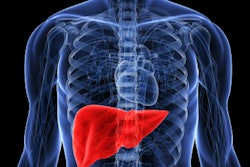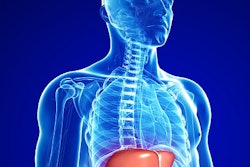MR elastography is better at distinguishing between lower and higher stages of liver fibrosis in pediatric patients without steatosis than in those with the condition, according to a study published in the June issue of Radiology. The finding suggests that the presence of steatosis can make the assessment of liver fibrosis challenging, wrote a team led by Dr. Andrew Trout of Cincinnati Children's Hospital Medical Center.
"In children and young adults, MR elastography performs significantly better for distinguishing stage 0 to 1 versus stage 2 or higher fibrosis in patients without steatosis than in those with steatosis," Trout and colleagues concluded. "This suggests a confounding effect of steatosis or inflammation in the population with nonalcoholic fatty liver disease."
The researchers investigated the use of MR elastography to assess liver stiffness and thus detect fibrosis in a pediatric population with a range of liver diseases. The study included 86 patients younger than 21 years (median age, 14) who underwent MR elastography and liver biopsy within three months of one another between January 2012 and September 2016 (Radiology, June 2018, Vol. 287:3, pp. 824-832).
The MR elastography exams were interpreted by a single reader who was blinded to pathology findings, while pathology specimens were reviewed by a single pathologist who scored steatosis and estimated fibrosis. Trout's group used receiver operating characteristic (ROC) curves to assess the technology's diagnostic performance.
Of the patient cohort, 51 (59.3%) had stage 2 or higher fibrosis and 44 (51.2%) had hepatic steatosis. The area under the ROC curve for stage 0-1 versus stage 2 or higher fibrosis was 0.70 for the whole study cohort, but it was significantly lower for patients with steatosis versus those without (0.53 versus 0.82), the investigators found.



.fFmgij6Hin.png?auto=compress%2Cformat&fit=crop&h=100&q=70&w=100)




.fFmgij6Hin.png?auto=compress%2Cformat&fit=crop&h=167&q=70&w=250)











